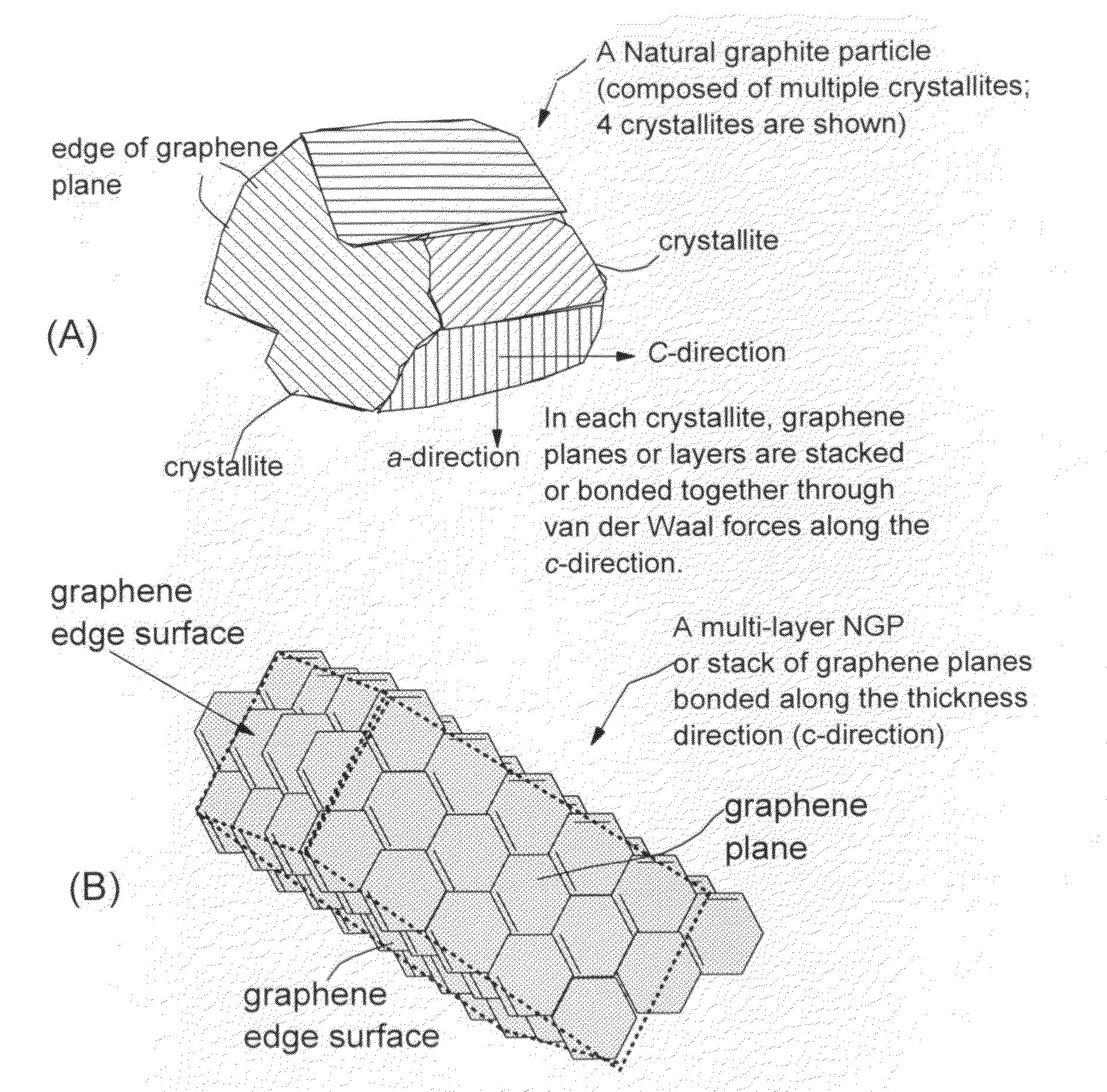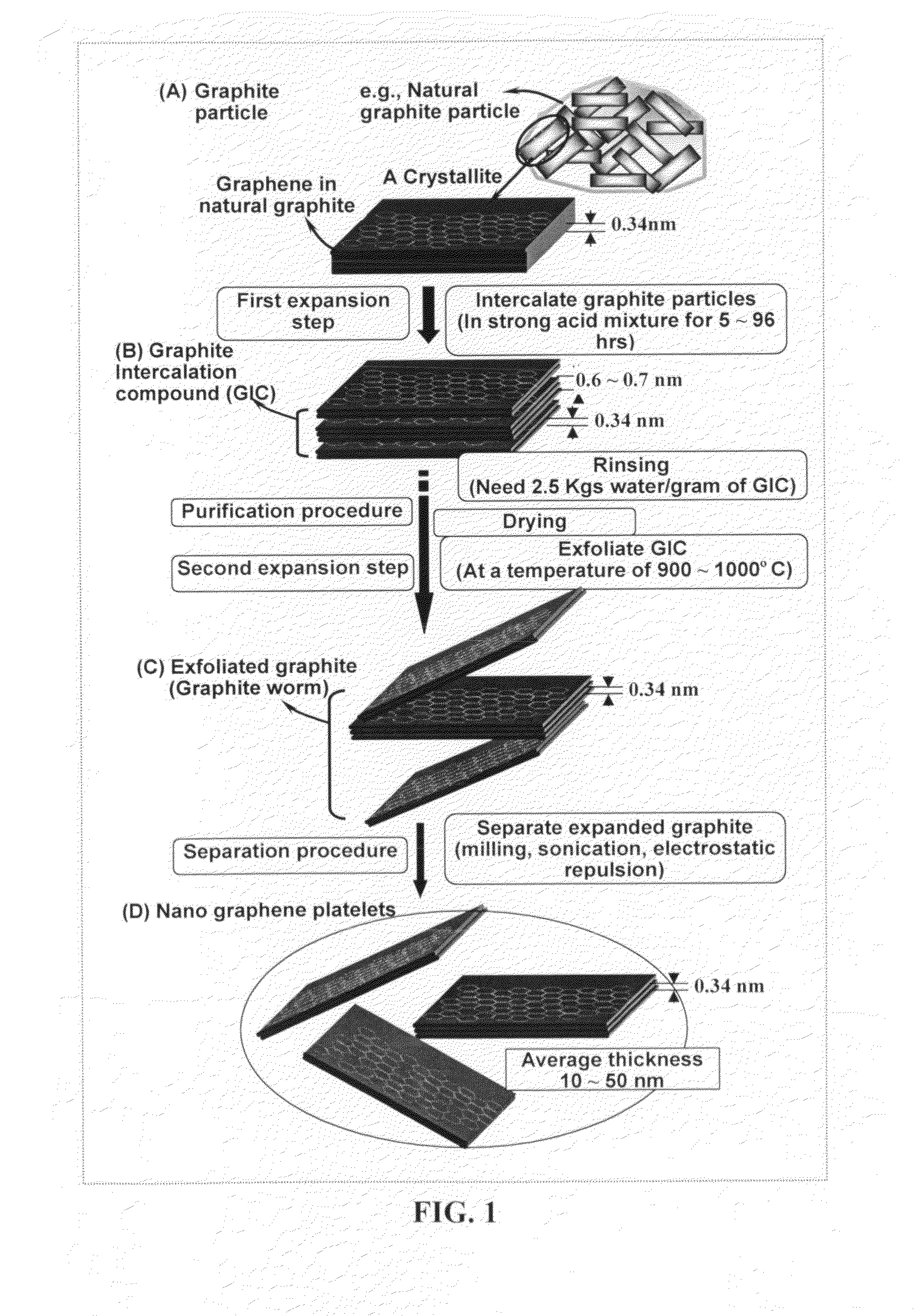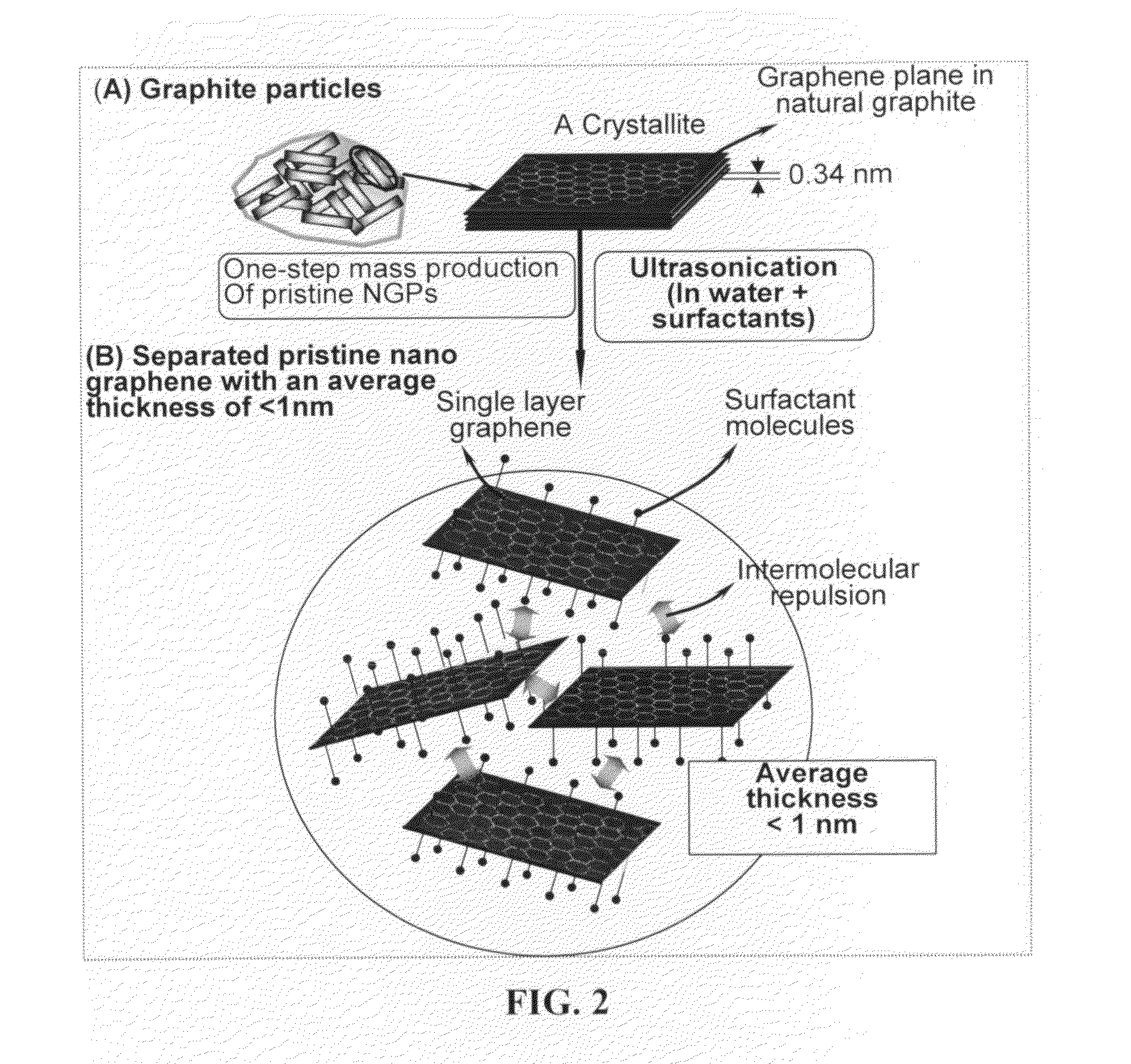Mass production of pristine nano graphene materials
a nano graphene and mass production technology, applied in the field of nano graphene, can solve the problems of high cost of moderately priced multi-walled cnt, inability to use high-volume polymer composites and other functional or structural applications, and inability to meet the requirements of large-scale production, and achieve high production yield and low surface tension
- Summary
- Abstract
- Description
- Claims
- Application Information
AI Technical Summary
Benefits of technology
Problems solved by technology
Method used
Image
Examples
example 1
Nano-Scaled Graphene Platelets (NGPs) from Natural Graphite
[0073]Five grams of natural graphite, ground to approximately 20 μm or less in sizes, were dispersed in 1,000 mL of n-Heptane. An ultrasonic energy level of 200 W (Branson S450 Ultrasonicator) was used for exfoliation and separation of graphene planes for a period of ½ hours. The average thickness of the resulting NGPs was 2.1 nm.
example 2
Ultrasonication of Natural Graphite Using a Solvent of High Surface Tension
[0074]Five grams of natural graphite, ground to approximately 20 μm or less in sizes, were dispersed in 1,000 mL of glycerol (surface tension=63 mN / m and graphene surface contact angle=125 degrees) to obtain a suspension. An ultrasonic energy level of 150 W (Branson S450 Ultrasonicator) was used for a period of 1 hour. Graphite particles were broken down to approximately 300 nm in thickness. Very few NGPs were recovered from the suspension after one hour.
example 3
NGPs from MCMBs
[0075]Five grams of MCMBs (supplied from Shanghai Shan Shan Tech Co.) with an average particle size of approximately 18 μm, were dispersed in 1,000 mL of benzene. An ultrasonic energy level of 250 W (Branson S450 Ultrasonicator) was used for the exfoliation and separation of graphene planes for a period of ½ hours. The average thickness of the resulting NGPs was 6.2 nm. When a lower surface tension liquid (Perfluorohexane, surface tension of 11.91 mN / m and contact angle of 23 degrees) was used, the average NGP thickness was 0.61 nm, indicating that most of the NGPs were single-layer graphene.
PUM
| Property | Measurement | Unit |
|---|---|---|
| contact angle | aaaaa | aaaaa |
| concentration | aaaaa | aaaaa |
| contact angle | aaaaa | aaaaa |
Abstract
Description
Claims
Application Information
 Login to View More
Login to View More - R&D
- Intellectual Property
- Life Sciences
- Materials
- Tech Scout
- Unparalleled Data Quality
- Higher Quality Content
- 60% Fewer Hallucinations
Browse by: Latest US Patents, China's latest patents, Technical Efficacy Thesaurus, Application Domain, Technology Topic, Popular Technical Reports.
© 2025 PatSnap. All rights reserved.Legal|Privacy policy|Modern Slavery Act Transparency Statement|Sitemap|About US| Contact US: help@patsnap.com



